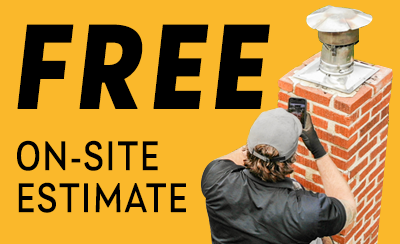How Tall Should A Chimney Be?
The neighborhoods of downtown Rochester and Buffalo are home to the fifth and sixth largest collections of historic homes in the U.S. So, whether you’ve kept the original hearth or opted for a modern gas fireplace, both rely on a properly functioning chimney for safe and efficient operation. But have you ever considered the height of your chimney? It might seem like a minor detail, but chimney height plays a crucial role in how well your fireplace works and the safety of your home. In this article, we will examine how tall a chimney should be.
 Back to Basics: How Do Chimneys Work?
Back to Basics: How Do Chimneys Work?
Even though your brick or stone masonry chimney is an aesthetically pleasing feature that improves curb appeal, its primary function is to create a safe and efficient passageway for smoke and fumes to exit your home. The chimney achieves this through draft, the force that pulls the hot air and smoke up the chimney. The height of your chimney is crucial in maintaining a proper draft.
Signs your Chimney Is the Wrong Height
A chimney that is too tall or too short for the heating appliance increases the risk of fire and exposure to harmful contaminants, including smoke and toxic carbon monoxide gas. Here are some signs that your chimney might not be venting correctly due to an incorrect height:
- Smoke spills back into the house: When there is insufficient draft to push the contaminants up the flue, smoke will fall back into the house (back puffing). It is a severe safety hazard and a common sign that your chimney may not be at the right height.
- Difficulty starting or maintaining a fire: A weak draft can make it hard to start a fire or keep it alive, which could indicate a height issue.
- Creosote buildup: Poor draft increases creosote buildup in the flue, a byproduct of wood combustion. The buildup is highly flammable and significantly increases the risk of chimney fires.
What is the 3-2-10 Rule?
The National Fire Protection Association (NFPA) and International Residential Code (IRC) advise chimney professionals to use the 3-2-10 Rule to determine the correct chimney height:
- The chimney must extend at least 3 feet above the highest point where it exits the roof.
- The chimney must be at least 2 feet higher than any part of your roof or any surrounding structures within 10 feet of the chimney (think dormers, trees, or neighboring buildings).
 This Rule, also adopted by the Chimney Safety Institute of America (CSIA), ensures proper airflow and prevents downdrafts that can push smoke back into your home. Remember, chimney height isn’t just about aesthetics; it directly impacts the safety and efficiency of your fireplace.
This Rule, also adopted by the Chimney Safety Institute of America (CSIA), ensures proper airflow and prevents downdrafts that can push smoke back into your home. Remember, chimney height isn’t just about aesthetics; it directly impacts the safety and efficiency of your fireplace.
Chimney Venting Problems Solved
If you’re unsure how tall your chimney should be or suspect venting issues, it’s vital to consult a Certified Chimney Professional®. From chimney inspection and cleaning to fireplace inserts and repairs, Felgemacher Fireplace Shop in Buffalo (Cheektowaga), N.Y., has everything your hearth desires to stay toasty and cozy this winter. Call (716) 907-4914 or contact us online to schedule an appointment today!



